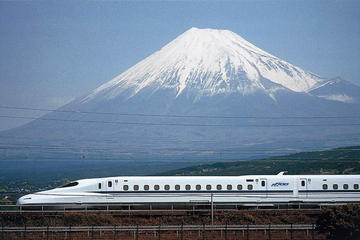« home • asia • JAPAN • Discover Japan
Discover Magical Japan
Somewhere between the elegant formality and the candid, sometimes boisterous exchanges that take place over a few drinks, between the sanitized shopping malls and the unexpected rural festivals, everyone finds their own vision of Japan.
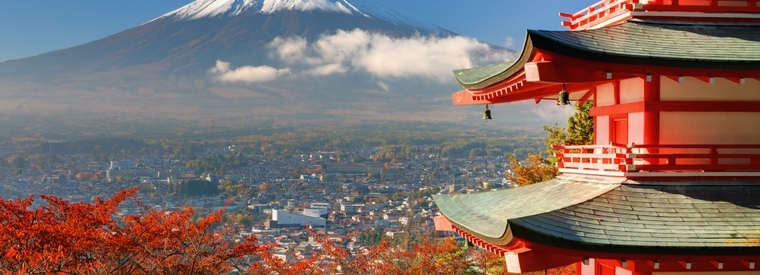
Popular Destinations:
Hokkaido •
Kansai •
Kanto •
Kyoto •
|
A | B | C | D | E | F | G | H | I | J | K | L | M | N | O | P | Q | R | S | T | U | V | W | X | Y | Z
» Maryudo Falls
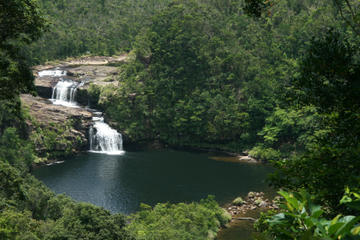
Located along the Urauchi River in the center of Iriomote Island in Okinawa, Maryudo Falls descends a total of 52 feet (16 meters) over the course of three stages. The falls, the largest by total water volume of all the Okinawa falls, is accessible via a 30-minute walk along a jungle trail, passing the Kanpiuree Waterfall along the way. The trail leads to a viewing platform, where visitors get an unobstructed view of the waterfalls in their entirety, before continuing on for a close-up, mist-in-your-face view of the cascading water …
» Meriken Park
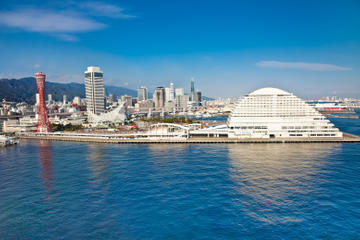
Occupying an outcropping of reclaimed land along Kobe's waterfront, the green space called Meriken Park houses some of the city's most recognizable contemporary architecture, such as the Kobe Port Tower and the Kobe Maritime Museum, as well as numerous art installations and fountains speckled across the grassy lawns. The 1995 Great Hanshin Earthquake devastated the port, claiming numerous lives. Today, Meriken Park features a memorial to those killed at the port during the disaster, which includes a small section of the damaged waterfront …
» Miho Museum
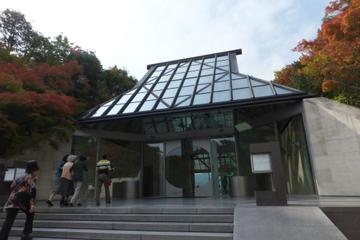
The Miho Museum is situated in the hills of Shigaraki, around an hour's drive southeast of Kyoto. The museum is named after Koyama Mihoko, who founded the museum and who also happens to be one of the richest women in Japan. The architecture of the Miho Museum is the first thing to strike visitors as they approach the building via a dramatic causeway. The mainly glass structure somehow blends seamlessly into its natural surroundings, and this theme continues inside the museum, with the use of warm stone and glass …
» Miyajima Island
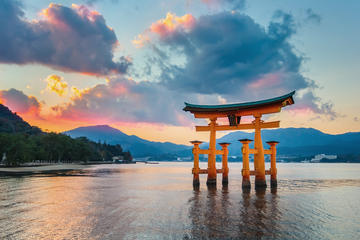
UNESCO-listed Miyajima Island sits within the Seto Inland Sea just outside of Hiroshima. The gem of an island has earned a reputation as one of Japan's top tourist spots due in large part to the large red shrine gate, called torii in Japanese, that rises from the water just off the island's shores. The oft-photographed torii was built in 1875 as a ceremonial entrance to the island's Itsukushima Shrine and is one of the largest in the country. According to local legend, the shrine was built on the island because it was believed to be the abode of gods …
» Mt Koya
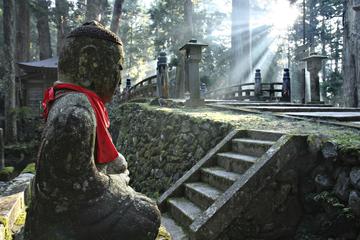
Mt Koya is at the center of Shingon Buddhism, which was introduced in Japan in 805 by Kobo Daishi - one of Japan's most important religious figures. Built on a forested mountain top, the secluded temple village of Koyasan has since developed around the Shingon headquarters, which is also the site of Kobo Daishi's mausoleum. Koyasan is the ideal place to experience an overnight stay at a temple lodging (or shukubo). Around 50 temples in the area offer this type of visit to both pilgrims and other travelers …
» Narusawa Ice Cave
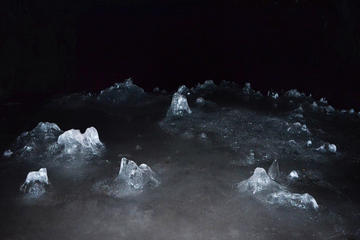
The Narusawa Ice Cave is located at the entrance to the Aokigahara Jukai (or Sea of Trees) forest. After being designated by the Ministry of Education as a natural monument in the 1920s, it is now considered a geological wonder, attracting tourists exploring the Five Lakes area at the base of Mount Fuji. More than 1,100 years ago, a volcano on Mount Fuji erupted and the lava flowed down between ancient volcanoes creating this two-tunnel cave. The cave experiences temperatures of three degrees celsius and is covered with ice all year-round, even at the height of summer …
» Norn Minakami Ski Area
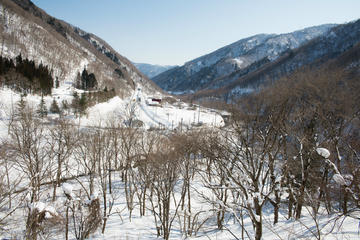
Located less than two hours outside Tokyo, Norn Minakami Ski Area operates four lifts servicing a variety of slopes suitable for skiers of all levels. About 20 percent of the area's terrain is suitable for advanced skiers, while a newer family course has an average slope decline of only 13 degrees, making it perfect for beginners. Skiers at Norn also enjoy early morning lift operation, as well as night skiing - an option not available at many resorts in the Tokyo area. Norn Minakami also operates a ski and snowboard school, rental facilities, a snow park …
» Ohara Museum of Art
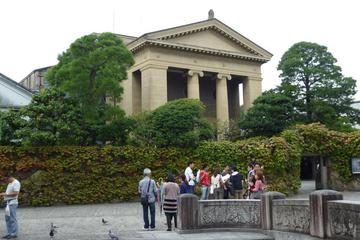
Japan's oldest museum of western art, the Ohara Museum of Art opened its doors in 1930 to commemorate the death of local artist Kojima Torajiro, whose western influences had inspired local businessman Ohara Magosaburo to import a varied collection of French paintings and sculptures. Today, the museum remains an important cornerstone of western art in Japan, expanding its collection to include an impressive selection of 17th- to 20th-century Dutch, Flemish and Italian works, Greek and Roman classical artworks, ancient oriental art …
» Okayama Korakuen Garden
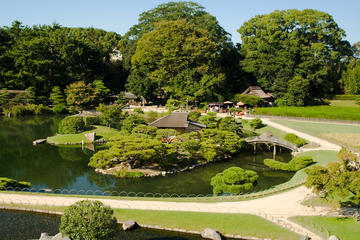
One of the Three Great Gardens of Japan, Okayama Korakuen Garden was commissioned by regional ruler Tsunamasa Ikeda in 1686 and took over 14 years to complete. Today, the 13-hectare garden is a protected public park and retains its original appearance despite undergoing extensive restoration in the post-World War II years. Its vast grassy lawn is Korakuen's most unique attribute, but for many visitors, it's the traditional Japanese features that draw the most attention, like the immaculately clipped bonsai trees …
» Sannomachi St (Kami Sannomachi)
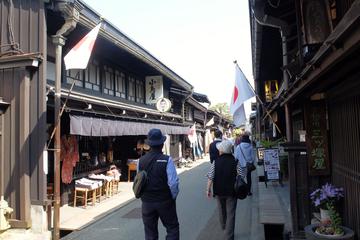
Take a walk down Sannomachi St (Kami Sannomachi) in Takayama's old town, and you'll feel like you've stepped back into the Edo Period (1600-1868). This well-preserved portion of the historic city features traditional homes, merchant houses, sake breweries, shops and cafes - some of them have been operating for centuries. Sake has long been an area specialty, and many of Takayama's oldest sake breweries are congregated along Sannomachi St. Recognizable by the large globes of cedar branches (called sugidama) hung above the doors …
» Shiraito Falls
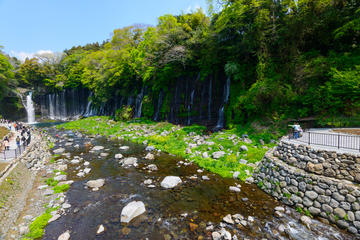
Cascading from the spring waters of nearby Mount Fuji, Shiraito Falls is a wide waterfall standing 20 meters high. Located in Fujinomiya, it is part of the Fuji-Hakone-Izu National Park and is a protected Japanese National Monument. It is is a tranquil natural space, unique in its 150 meter width, and is consistently ranked among the most beautiful waterfalls in Japan. The water moves down the rocks and moss in thin streams resembling white silk, which is where the waterfall get its name. At the base is a deep blue pool of calm water …
» Takayama's Morning Market
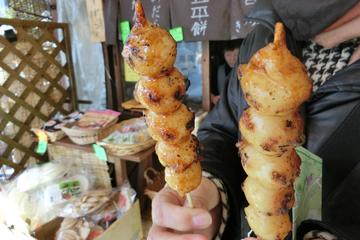
Each morning the historic city of Takayama hosts two morning markets. The smaller of the two takes place in front of Takayama Jinya and the larger - one of the best morning markets in Japan - takes place on the east bank of the Miya-gawa River in Old Town. The morning market tradition dates back to the Edo Period, and modern day shoppers will find vendors selling fresh produce, local folk art, souvenirs, sweets, fresh milk and other traditional Japanese cooking ingredients, like miso …
» Tenshi Mountains
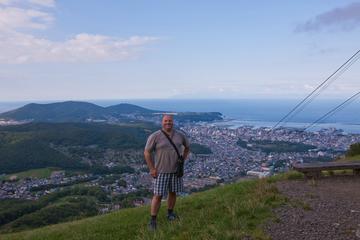
The Tenshi Mountains are a mountain range within close proximity of Mt Fuji in Shizuoka, Japan. The name Tenshi translates roughly to 'Son of Heaven.' Though just outside of Tokyo, the clear lakes and creeks here, along with the view of Mt Fuji, make this countryside area seem worlds away from the city. The largest mountain in the range is Mt Kenashi, standing nearly 2,000 meters tall on the border of the Yamanashi and Shizuoka prefectures. The scenic Asagiri Plateau stretches from here all the way to the base of Mt Fuji …
» Todai-ji Temple
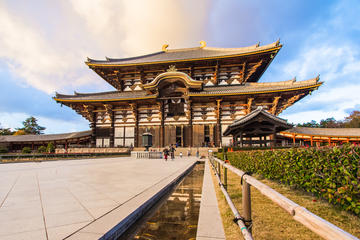
Located in Deer Park (Nara Park) in Nara, about 35 minutes from Osaka by train, Todaiji Temple is one of Japan's most famous and historically significant Buddhist temples. Originally built in the year 752, the temple as it exists today dates back to 1709. The main hall, called Big Buddha Hall (Daibutsuden), is the world's largest wooden building, even though it's a third smaller than the original hall from the 700s. The greatest attraction in the Todaiji Temple complex is the enormous bronze Buddha statue (Japan's largest) …
» Urauchi River
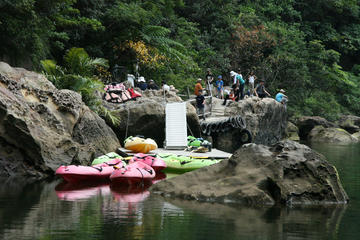
The Urauchi River, the longest river in Okinawa Prefecture, flows for 24 miles (39 kilometers) through the heart of Iriomote Island's dense mangroves and subtropical forest, and cascading down two waterfalls, Kanpiuree and Maryudo, along the way. The most popular way to experience the spectacular scenery along the Urauchi River is on a river cruise. These popular excursions depart frequently throughout the day from the Urauchibashi bus stop and take visitors along a 5-mile (8-kilometer) segment of the river to Gunkan-iwa Rock …
» Yatai Kaikan Hall
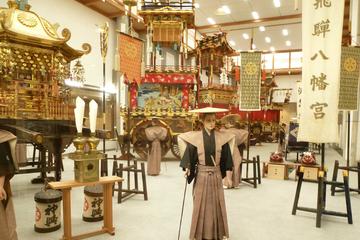
Each autumn, the historic city of Takayama hosts Takayama Matsuri, ranked as one of Japan's top festivals. Throughout the remainder of the year, the Yatai Kaikan Hall displays several of the elaborate floats used during the festival. These colorful floats, of which four of 11 are on display at any given time, date back to as early as the seventeenth century and are adorned with intricate carvings, hanging Japanese lanterns and marionettes. Each float is mounted on wheels and requires a team of 20 people to maneuver them through the streets …
» Yokohama
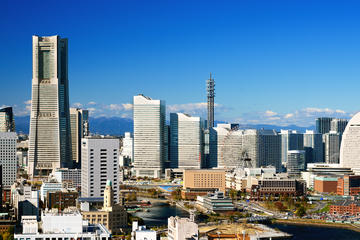
A maritime city with international flair, Yokohama was once one of Japan's preeminent ports for international trade. Yokohama's port was the first to open up to foreign trade after the end of Japan's isolationist economic policy in 1854. By 1923, the once small fishing village had emerged as a burgeoning metropolis but faced an early demise after experiencing devastating damage in the Great Kanto Earthquake. Before it could fully recover, World War II fire bombings ravaged the city again. Today, Yokohama steadfastly remains Japan's second largest city …
» Yudanaka Onsen
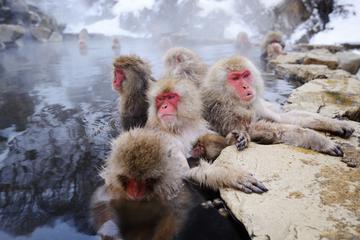
The village of Yudanaka Onsen is most famously known for the troop of Japanese Macaques, also called Snow Monkeys) who reside in the Yokoyu Valley and soak in the area's natural hot springs. While the monkeys are certainly entertaining, the historic village, with a history as a hot springs resort dating back hundreds of years, is well worth a visit. One of several onsen (hot springs) resort areas in the region, Yudanaka is one of the largest, while still maintaining its historic charm …
» Zenko-ji Temple
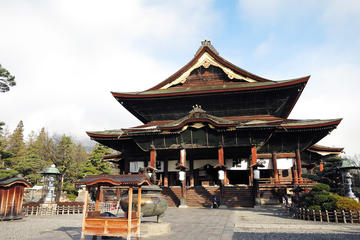
In the year 642, Zenko-ji Temple was founded when one of the earliest Buddhist statues in Japan, brought over from the Korean Peninsula, was enshrined at the site. Today, the temple is one of the most important Buddhist sites in the country, as well as Japan's third largest wooden structure, with the entire town of Nagano built up around it. The structure as it stands today dates back to 1707 and contains a large hall displaying a variety of Buddhist statuary, a main alter and an underground passage beneath the alter …
Page 1 • Page 2
« home • asia • JAPAN • Discover Japan




